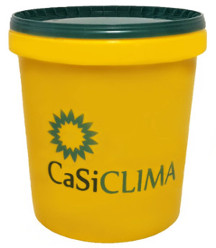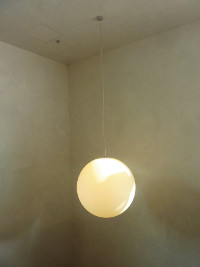CaSiCLIMA TS
New-generation clay plasters
In 20 years, CaSiCLIMA® has been able to patent and introduce decorative interior wall plasters with superior features if compared to the standard, since 2021 with VOC content of 0g per kg. Benefits:
CaSiCLIMA TS can be easily and quickly applied with trowels and treated with a sponge or trowel, it can also be sprayed with a pump. Thanks to the appropriate primer, it can be applied directly to walls with old paint, gypsum, gypsum boards/gypsum fiberboards, lime/cement, clay/loam. It immediately activates itself and improves the living comfort in the house, even without being forced to remove old wall paints/plaster beforehand.
Important: Theoretically the best wall paints are made by acrylic or semi-plastic additives, with high water resistance, high installation speed, superior abrasion resistance, and unlimited coloring options. From the installer's point of view, this can be based on pure comfort and the obligation to "make many meters". The truth is that these oil-based synthetic materials are badly breathable, low vapour open, and very moisture sensitive. As these are not capillary-active materials and they form a film on the walls, the formation of condensation / dripping (=mold) on the surface is likely, at the latest as soon as the toxic anti-mold additives have evaporated.
- Mineral: Completely recyclable like mineral building rubble
- breathable: It creates an excellent living comfort
- extremely capillary active: It reduces strong condensation and moisture on the wall
- odour neutralizing and self-cleaning: Because it is made with natural and technical clay
- humidity regulating in the house around 50%: Because it is made with natural and technical clay
- resistance to mold and water: With pH11 and water glass
- contribution to energy saving: It increases the surface temperature of the wall
- excellent sound absorption: Reduced reverberation, because it is made with clay
- matt and irregular: It creates a lively environment in modern and antique house design
- total fire resistance: Class A1
CaSiCLIMA TS can be easily and quickly applied with trowels and treated with a sponge or trowel, it can also be sprayed with a pump. Thanks to the appropriate primer, it can be applied directly to walls with old paint, gypsum, gypsum boards/gypsum fiberboards, lime/cement, clay/loam. It immediately activates itself and improves the living comfort in the house, even without being forced to remove old wall paints/plaster beforehand.
Important: Theoretically the best wall paints are made by acrylic or semi-plastic additives, with high water resistance, high installation speed, superior abrasion resistance, and unlimited coloring options. From the installer's point of view, this can be based on pure comfort and the obligation to "make many meters". The truth is that these oil-based synthetic materials are badly breathable, low vapour open, and very moisture sensitive. As these are not capillary-active materials and they form a film on the walls, the formation of condensation / dripping (=mold) on the surface is likely, at the latest as soon as the toxic anti-mold additives have evaporated.




